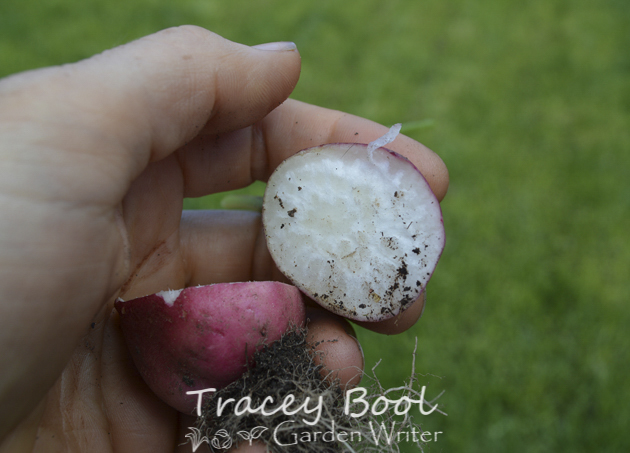|
Growing, Eating and Enjoying Radish
(18 December 2014) Radish (Raphanus sativus) are a versatile root vegetable that come in a myriad of types and colours and have many uses. Some are small and mild, maturing in as little as four weeks, while others are larger, pungent, and can take several months to mature. They make for a spicy addition to salads and soups (both young leaves and roots), and are a popular ingredient in pickle recipes. Radish are high in vitamin C, aid digestion, and can help remedy bacterial and fungal complaints. Radish are an easy care crop which can be grown throughout the year in all but the harshest weather. Select a well-lit position protected from hot westerly sun and wind. Because they are a root crop, direct sowing is recommended as it prevents forking and produces a more resilient plant. Radish don’t take up much room so they can easily be planted amongst a seemingly burgeoning veggie patch or used to protect slower, more sensitive seedlings. Their prompt and reliable germination rate also makes for a handy marker of more leisurely crops such as carrots and onions. Radish prefer a nutritious, friable soil and respond well to regular applications of organic fertiliser teas and seaweed tonics. Water them regularly to ensure great flavour and to avoid bitter, overtly-peppery, disappointment. Theoretically, you could get sick of the sight of radish in your garden and on your plate as there isn’t a season they cannot be grown in. But, until then, be sure to take advantage of all the benefits this robust and nutritious root crop has to offer. |

